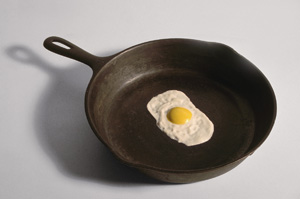Over the years, many of us have come to rely on nonstick pans as the best way to either cook or bake food without having to use a lot of oil or get stuck afterward with a challenging cleanup. However, the latest reports have raised questions about the safety of nonstick cookware and the environmental concerns regarding perfluorooctanoic acid (PFOA), also known as C-8, a chemical used to bond the nonstick coating to the pan. This has been labeled a likely carcinogen.
So what should we do? The first thing you might try is your grandmother’s favorite cookware — her cast iron pans, cornbread molds and Dutch ovens. But what was the secret that made her food taste so good?
You first have to know how to “season” the pan to give your food that delicious flavor. Here are some steps to make sure your cast iron cookware gets properly seasoned.
Wash the cookware with a mild dish detergent, then rinse and dry thoroughly with paper towels.
Next, get some lard (real lard, not shortening or oil). Rub it all over your cast iron pan — handle and all. Place it in a 300° oven, so that the lard is baked into the pan. As the lard begins to melt, massage it into the pan with a paper towel.
Put the pan back in the oven for about an hour, then remove it and let it sit on the stove to cool. You will want to do this for the first few times you use it. After a while, you will not have to season it anymore, as the food itself will continue the process.
Keep your cast iron cookware out of water as much as possible. After cooking with it, do not wet it until you are ready to clean it. Scrub it with a firm wire brush or scour it with coarse salt on a paper towel, then wipe the inside down with a little vegetable oil.
Now that you know how to season your cast iron cookware, it is time to grab your grandmother’s cookbook and get cracking on those beloved recipes.
Source: www.hillbillyhousewife.com.
Reprinted from AzNetNews, Volume 30, Number 5, Oct/Nov 2011.






February 23, 2012
Food